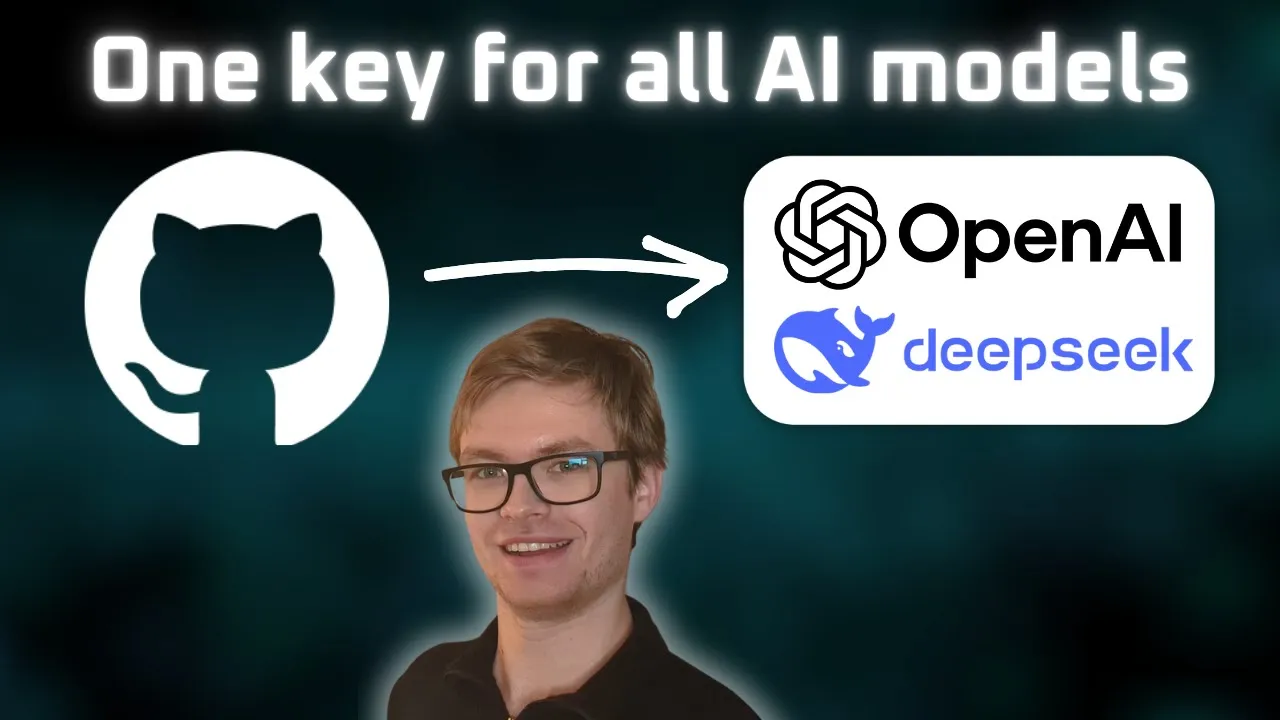Leveraging GitHub Models for AI Development
The landscape of AI implementation has dramatically evolved, making sophisticated language models accessible to developers without substantial upfront investment. GitHub Models represents a significant shift in this space, offering a powerful sandbox environment where developers can experiment with state-of-the-art AI models like GPT-4.0 and DeepSeek R1 at zero cost during the development phase. For comprehensive guidance on building production-ready systems, explore my complete guide to building AI applications.
Strategic Model Evaluation Without Financial Commitment
One of the most valuable aspects of GitHub Models is the ability to directly compare different language models side-by-side. This comparative approach allows developers to:
- Evaluate model responses to identical prompts
- Identify subtle differences in reasoning capabilities
- Assess response speed and generation characteristics
- Make informed decisions based on actual performance
This evaluation capability serves as a critical first step in selecting the right model for your specific application requirements. Rather than committing to a particular model based on specifications alone, developers can witness firsthand how each model handles the types of queries their application will process.
Understanding Model Capabilities and Use Cases
Different language models excel in different scenarios. For instance, the transcript highlights an important distinction between models optimized for different types of queries:
- Efficiency-optimized models (like some GPT variants) respond quickly to straightforward questions, making them ideal for applications where speed and conciseness matter most
- Reasoning-optimized models (like DeepSeek R1) excel at complex problems requiring deeper analysis, making them suitable for applications dealing with nuanced queries
This fundamental understanding allows developers to match model capabilities with their specific use case. An application designed to provide quick factual responses might benefit from an efficiency-focused model, while one built to analyze complex scenarios would likely perform better with a reasoning-focused model.
The Development-to-Production Pipeline
GitHub Models provides a thoughtfully designed pathway from initial experimentation to production deployment:
- Development phase: Free access to multiple AI models through personal access tokens
- Testing phase: Limited rate allowances suitable for applications with test users
- Production transition: Migration path to Azure AI for applications requiring higher rate limits
This graduated approach means developers can validate their concepts and build functioning prototypes without financial investment. Only when their application has proven its value and needs to scale beyond the free tier’s rate limits does a financial commitment become necessary. Learn how to deploy AI models in production when you’re ready to scale beyond development environments.
Rate Limit Considerations and Scale Planning
Understanding rate limits is crucial when planning your AI application’s journey from development to production:
- Development tier: Up to 50 requests per day for high rate limit tier models
- Production needs: Azure OpenAI integration for applications exceeding these limits
This structure creates a natural decision point for transitioning applications. The free tier provides ample capacity for development and limited testing, while the clear pathway to production through Azure ensures applications can scale when successful.
Strategic Testing Approaches
Before transitioning to paid services, developers can maximize the value of the free tier through strategic testing approaches:
- Focus on qualitative testing of model responses rather than volume testing
- Develop comprehensive input variations to evaluate model performance across use cases
- Implement efficient caching strategies to minimize redundant requests
- Design asynchronous architectures that accommodate rate limits
These approaches allow developers to thoroughly validate their application’s performance with different models while staying within free tier limitations.
Balancing Capabilities for Optimal Selection
The ultimate goal is selecting the model that best meets your application’s specific requirements. This means weighing factors like:
- Response quality and accuracy
- Processing speed and latency
- Reasoning depth and analytical capabilities
- Rate limits and cost considerations
By leveraging GitHub Models’ free development environment, these factors can be evaluated through direct experimentation rather than theoretical assessment.
Conclusion
GitHub Models represents a significant democratization of AI development, removing financial barriers to experimentation with cutting-edge language models. By providing a zero-cost entry point and clear scaling pathway, it enables developers to validate concepts, build prototypes, and even launch initial versions without upfront investment. For career development guidance, see my comprehensive AI engineering career path. This approach fundamentally changes the AI development lifecycle, making sophisticated AI implementations accessible to a much broader range of developers and organizations.
To see exactly how to implement these concepts in practice, watch the full video tutorial on YouTube. I walk through each step in detail and show you the technical aspects not covered in this post. If you’re interested in learning more about AI engineering, join the AI Engineering community where we share insights, resources, and support for your journey. Turn AI from a threat into your biggest career advantage!

